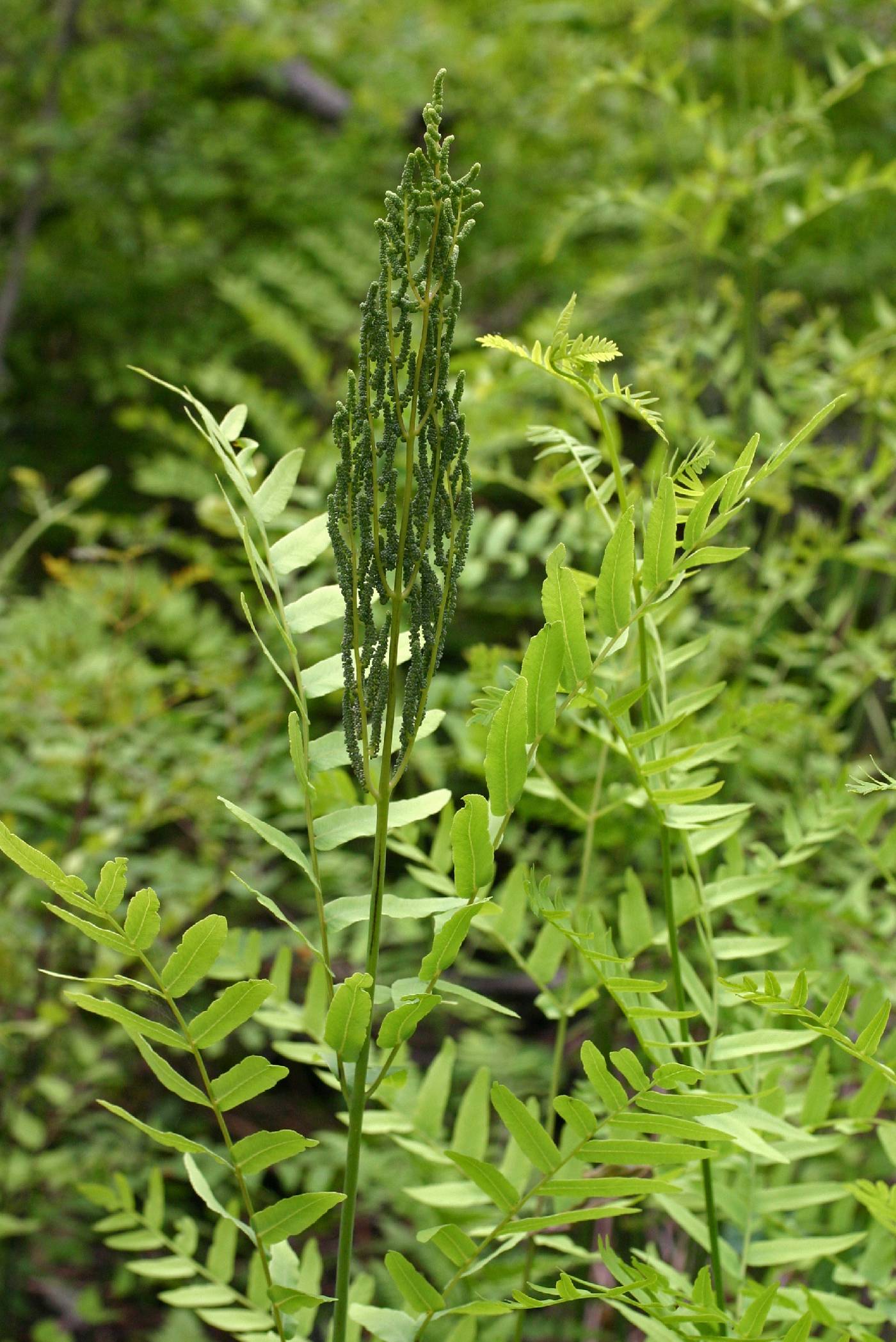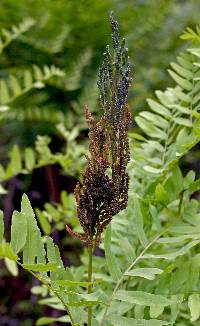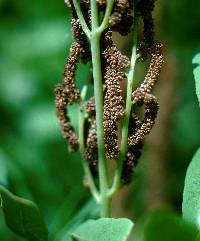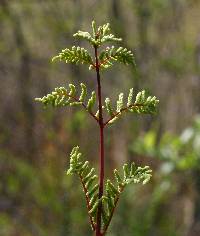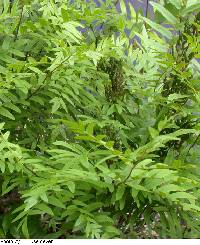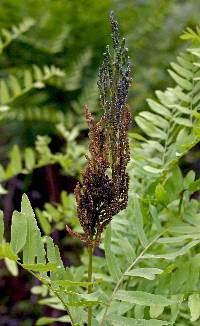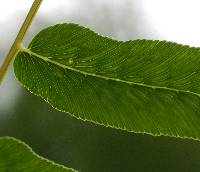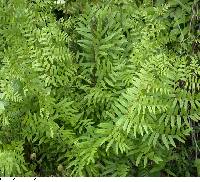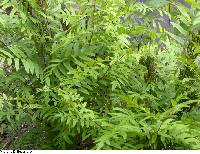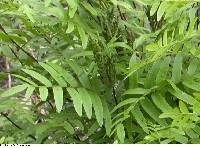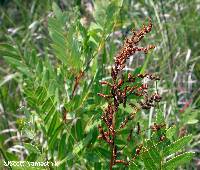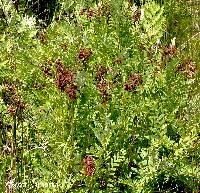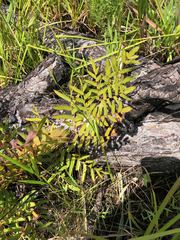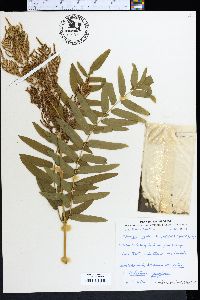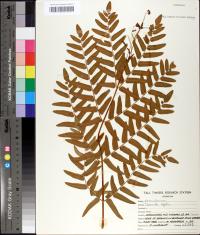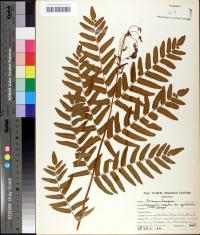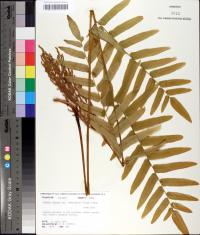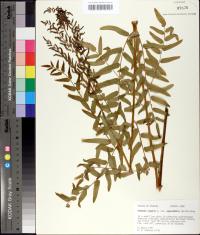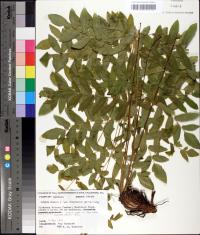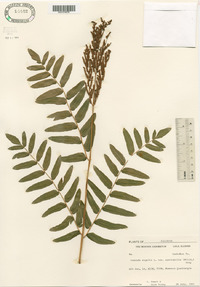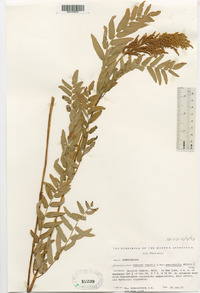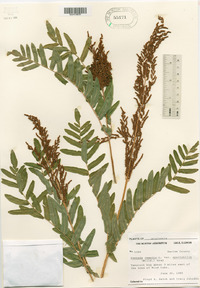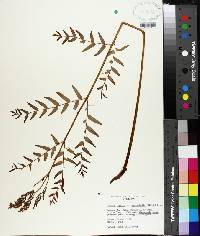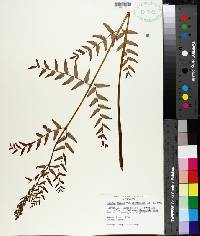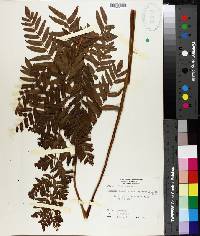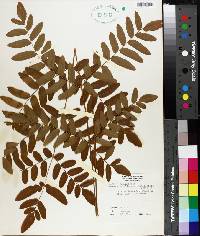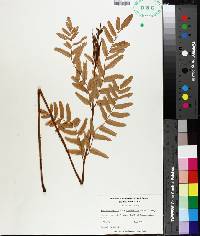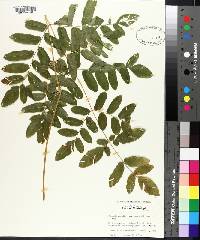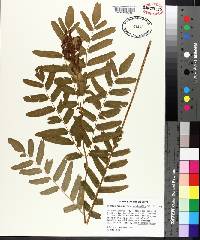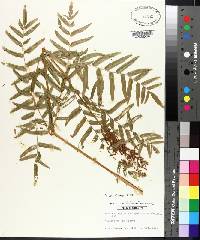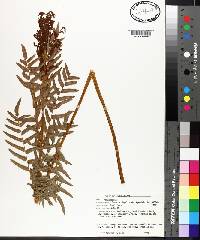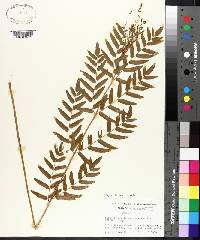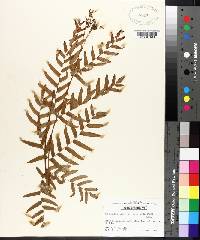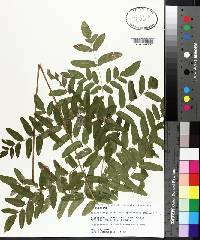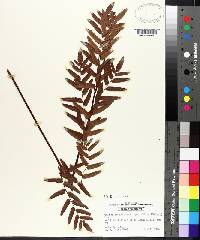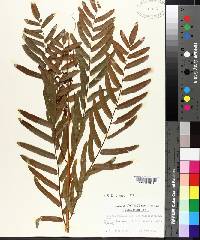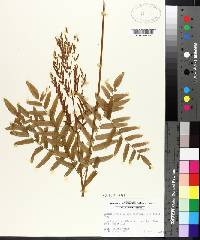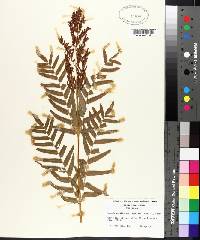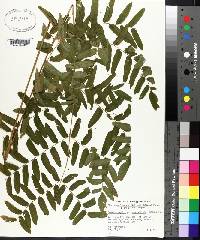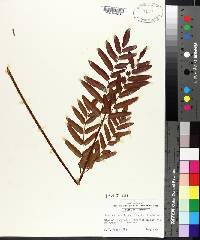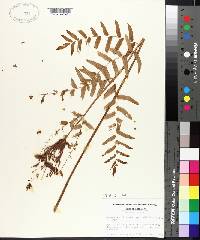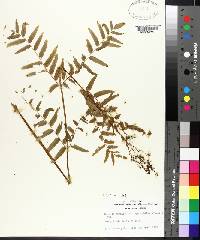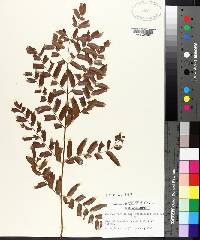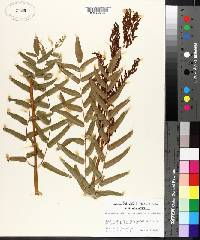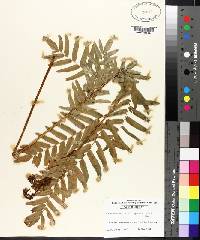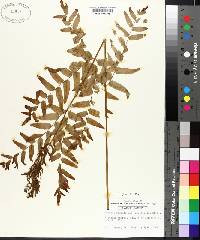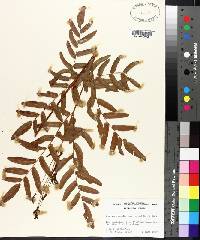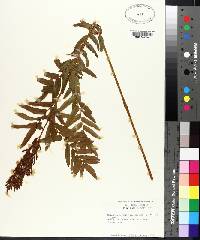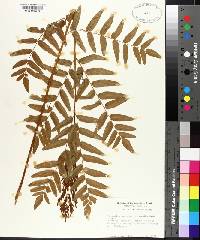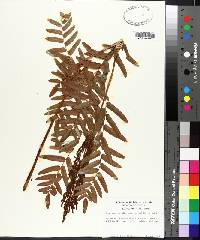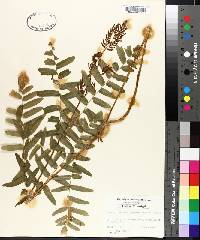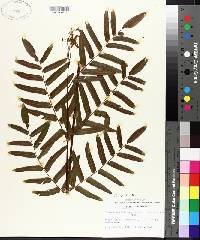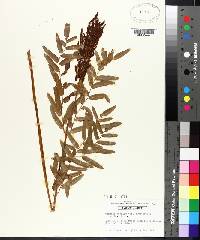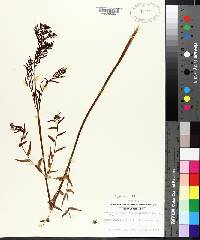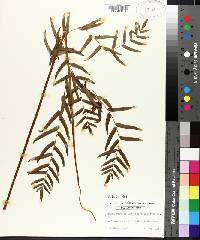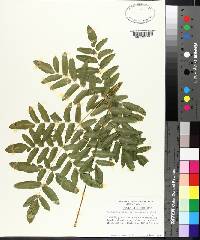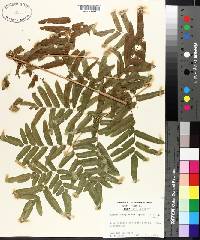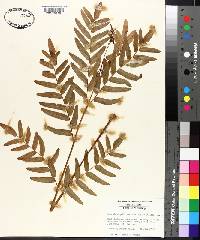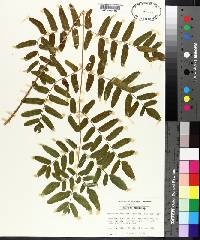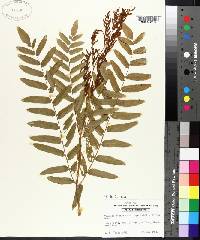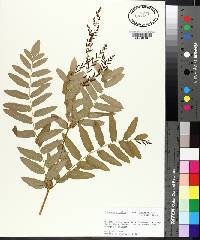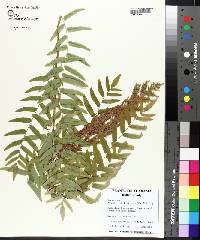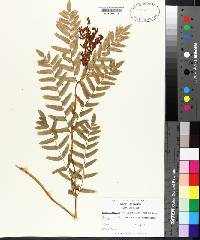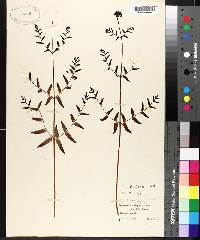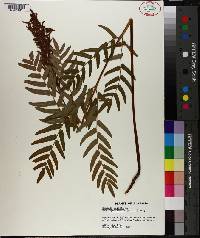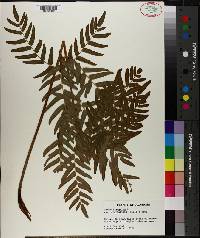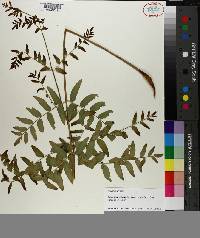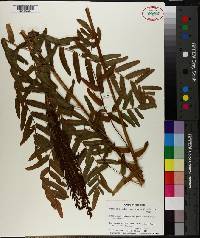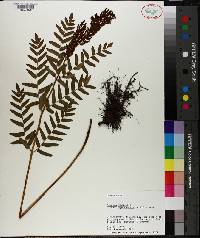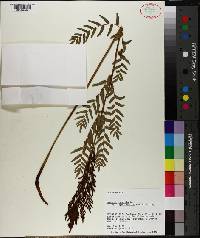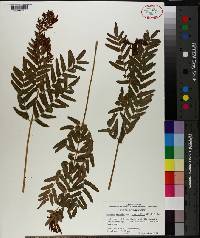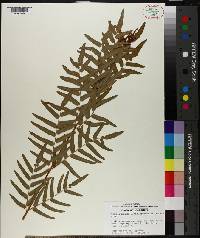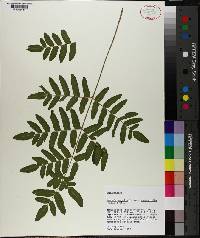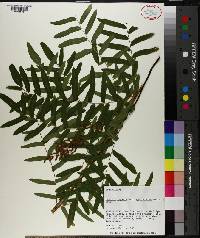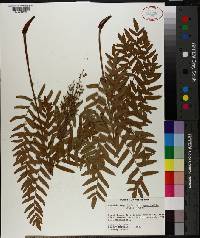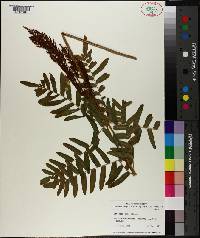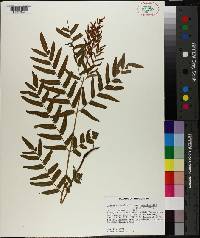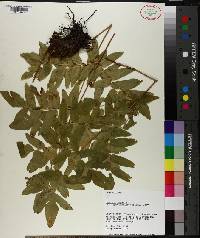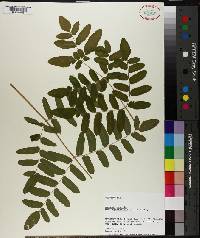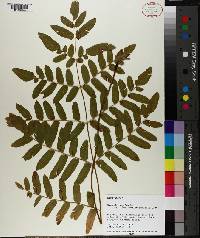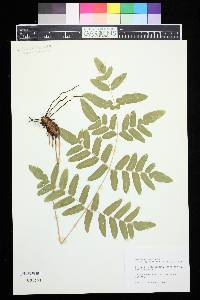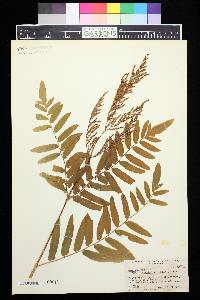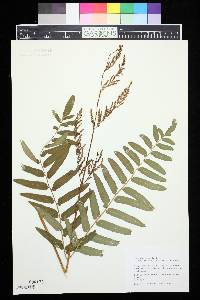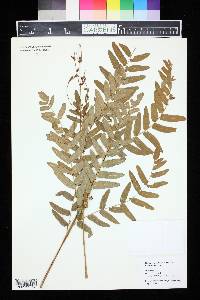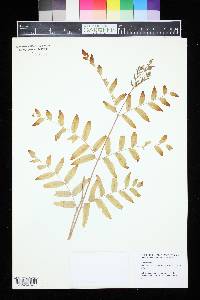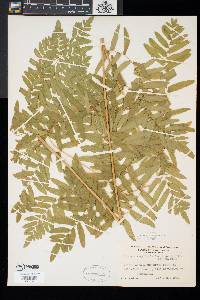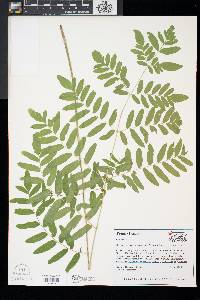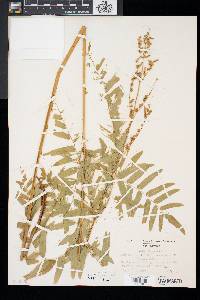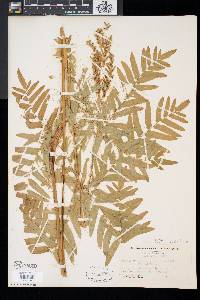Osmunda spectabilis
|
|
|
|
Family: Osmundaceae
Royal Fern, more...Royal Fern
[Osmunda gracilis Link, moreOsmunda palustris Schrad., Osmunda regalis f. anomala S.K.Harris, Osmunda regalis f. linearis Clute, Osmunda regalis f. nana Fernald, Osmunda regalis f. orbiculata Clute, Osmunda regalis subsp. palustris Á. Löve & D. Löve, Osmunda regalis subsp. spectabilis (Willd.) À. Löve & D. Löve, Osmunda regalis var. palustris (Schrad.) C. Chr. ex Angely, Osmunda regalis var. spectabilis (Willd.) A. Gray] |
Leaves 2-pinnate; petioles ± length of blades, winged, with light brown hairs, glabrate at maturity. Sterile leaves broadly ovate, ca. 0.75--1 m; pinnae lanceolate, lacking tuft of hairs at base; pinnules short-stalked, base oblique to somewhat truncate, margins subentire to remotely dentate, apex acute to rounded. Fertile leaves with greatly reduced sporangia-bearing pinnae at apex. Sporangia greenish, turning red, then rusty brown. 2 n =44. Sporulation early spring--midsummer; 0--2300 m; St. Pierre and Miquelon; N.B., Nfld., N.S., Ont., P.E.I., Que.; Ala., Ark., Conn., Del., Fla., Ga., Ill., Ind., Iowa, Ky., La., Maine, Md., Mass., Mich., Minn., Miss., Mo., N.H., N.J., N.Y., N.C., Ohio, Okla., Pa., R.I., S.C., Tenn., Tex., Vt., Va., W.Va., Wis. The chloroplasts within the spores give the young sporangia their green color. As the spores mature and are shed, the sporangia change color to a distinctive rusty brown. Osmunda regalis is widely distributed in Europe and Asia and is widely cultivated as an ornamental. Perennial fern 0.5 - 1.8 m tall Leaves: several, clustered, mostly erect, arising from top of rhizome near ground level, and held on winged stalks, which are covered with light brown hairs when young, and become almost hairless with age. The leaf blades are pinnately compound two times so that the segments (pinnae) are further pinnately compound. Two different kinds of leaves are produced: sterile and fertile. Rhizomes: frequently clumped, short-creeping with often partially erect tips, covered by remnant bases of old leaf stalks, and with black, fibrous roots. Spores: numerous, all alike, green, and contained in red to rust-brown sacs (sporangia) on the fertile pinnae. The spores are released from May through July, and give rise to the gametophyte (the sexual phase of the plant), which is small, green, inversely heart-shaped to elongate, and sits above the ground. Sterile leaves: several, mostly erect, stalked, green, relatively firm, 0.75 - 1 m long, broadly egg-shaped in outline, but pinnately divided two times. Fertile leaves: one to several, erect, stalked, greenish, similar to sterile leaves for most of their length, but with several pair of greatly reduced, fertile segments (pinnae) at top of leaf. Similar species: Osmunda regalis var. spectabilis is quite different from the other two species of Osmunda in the Chicago Region because its leaves are pinnately compound two times (the pinnae are also pinnately compound), while O. claytoniana and O. cinnamomea have pinnate leaves with only pinnately lobed segments (the pinnae are pinnatifid). Habitat and ecology: Somewhat frequent in boggy habitats and springy, organic-rich areas, as well as swampy woodlands. Occurence in the Chicago region: native Notes: The typical variety of this species, O. regalis var. regalis, is found in Europe and Asia. Etymology: Osmunda can mean fragrant, but some authors believe the name originates from the Saxon word Osmunder, which is the equivalent to the god Thor. Regalis means royal. Spectabilis means spectacular or showy. Author: The Field Museum Lvs mostly 5-18 dm; petiole glabrous; blade bipinnate, broadly ovate, to 5.5 dm wide; pinnae 5-7 pairs, subopposite, the lowest slightly reduced; pinnules alternate, 7- 10 to a side, oblong, to 7 נ2.3 cm, sessile or nearly so, rounded and oblique at the base, obtuse, serrulate, finely and closely veined; fertile pinnae borne at the ends of some of the blades, several pairs, the larger segments oblong, 6-11 נ2-3 mm, at first greenish, eventually brownish; 2n=44. Swamps and moist places, mostly in acid soil; circumboreal, in Amer. from Nf. to Sask., s. to Fla., Tex., and trop. Amer. Spring-early summer. The Amer. plant is var. spectabilis (Willd.) A. Gray. Gleason, Henry A. & Cronquist, Arthur J. 1991. Manual of vascular plants of northeastern United States and adjacent Canada. lxxv + 910 pp. ©The New York Botanical Garden. All rights reserved. Used by permission. From Flora of Indiana (1940) by Charles C. Deam Frequent in the lake area and infrequent to local south of it. It is not especially particular as to its habitat except that it must be a moist or wet one. It is found mostly in low woods, about ponds and lakes, and less frequently in the open in wet prairies. …… Indiana Coefficient of Conservatism: C = 8 Wetland Indicator Status: N/A |
|
|
|

